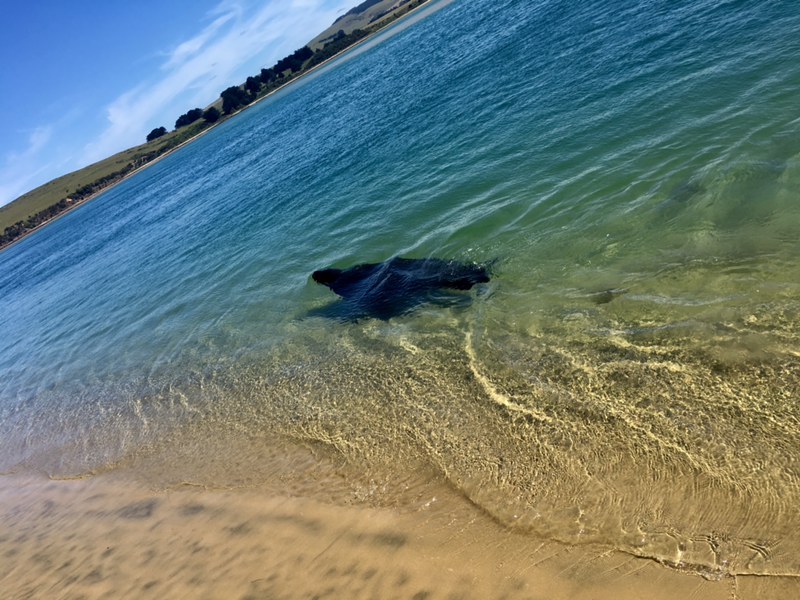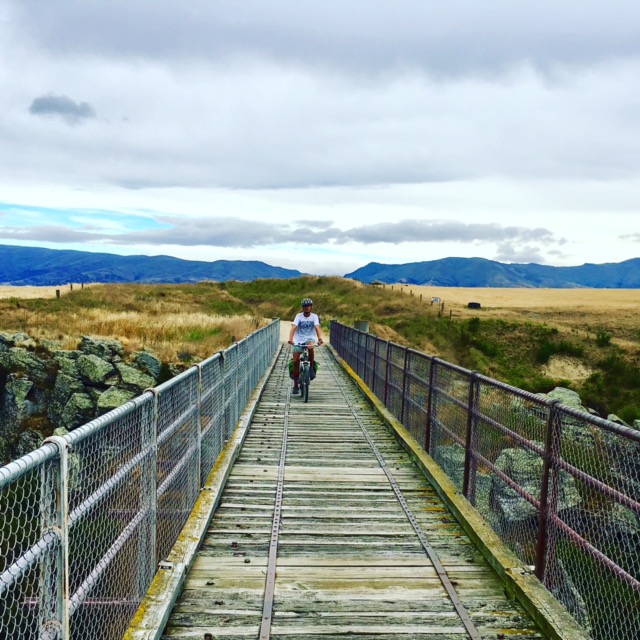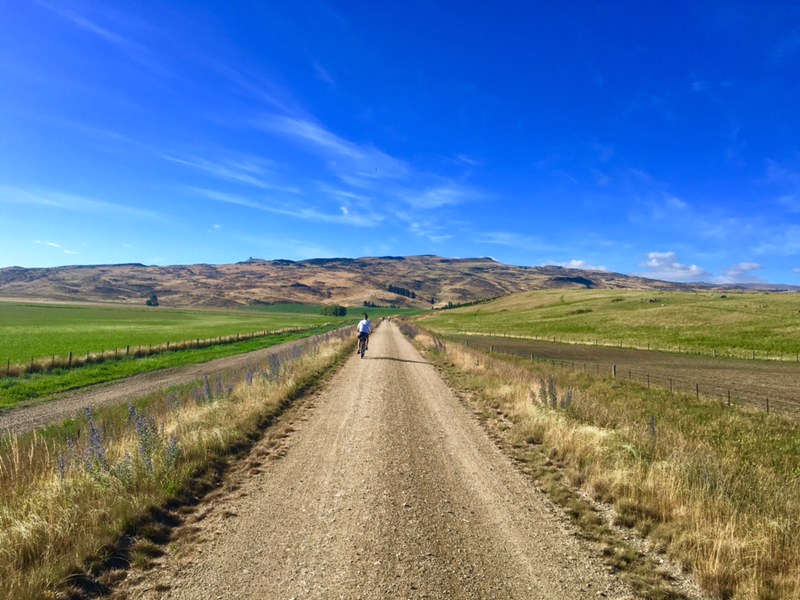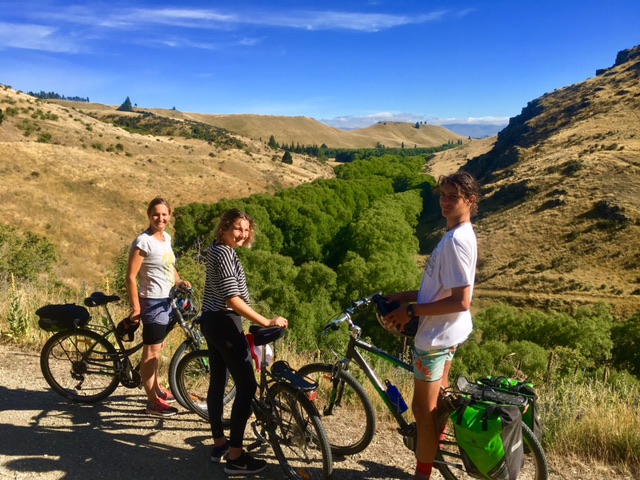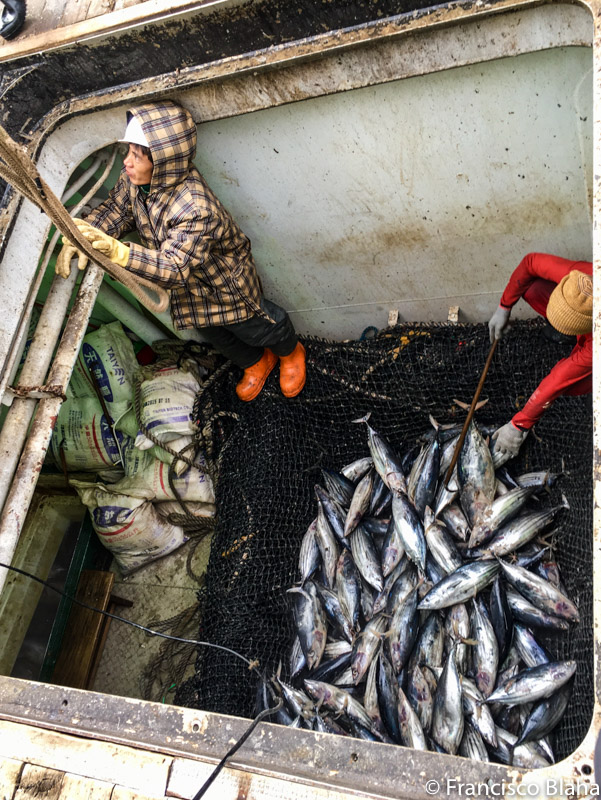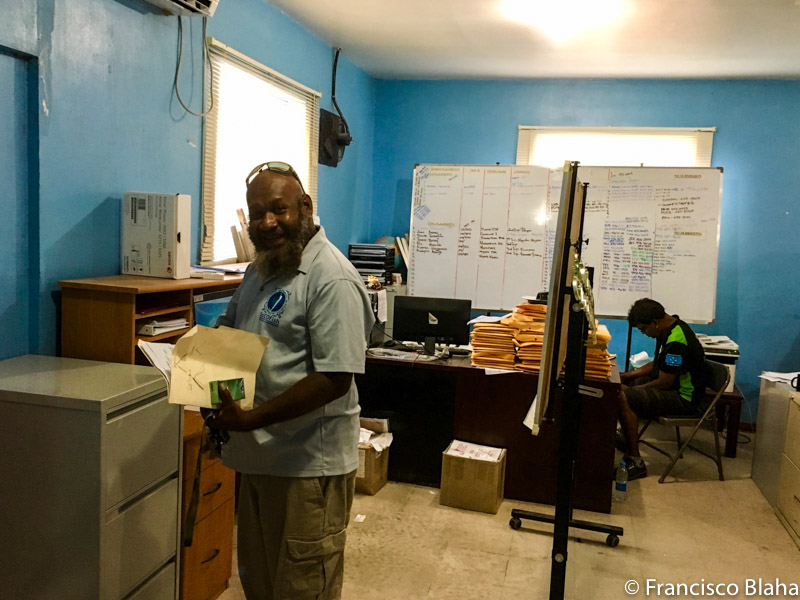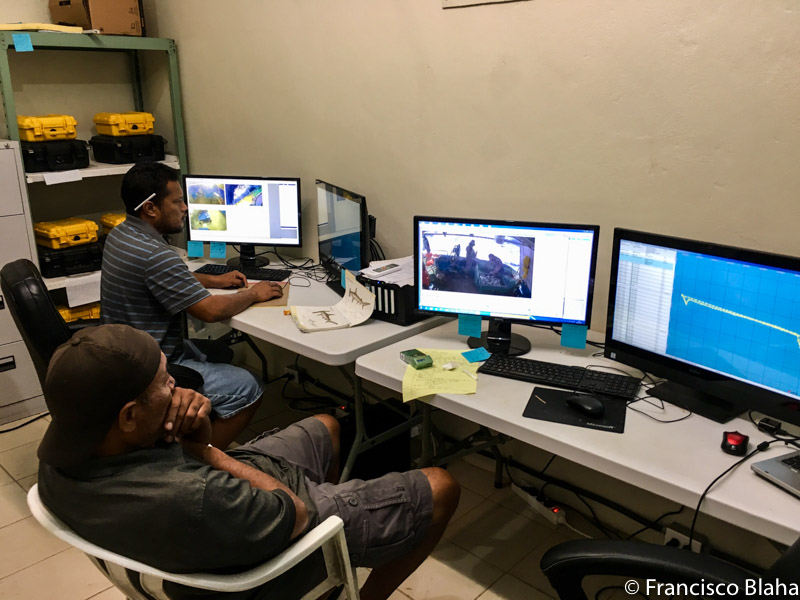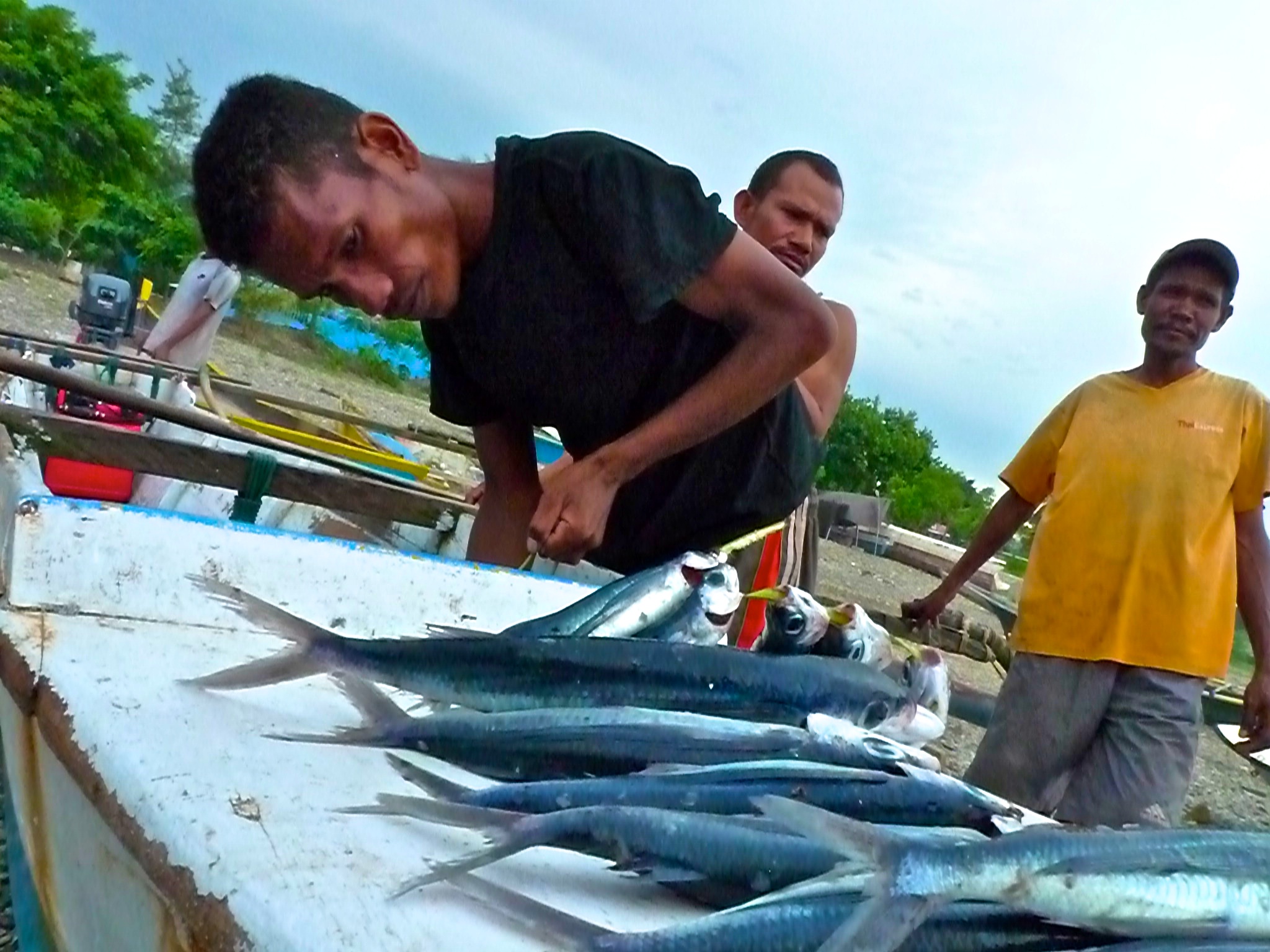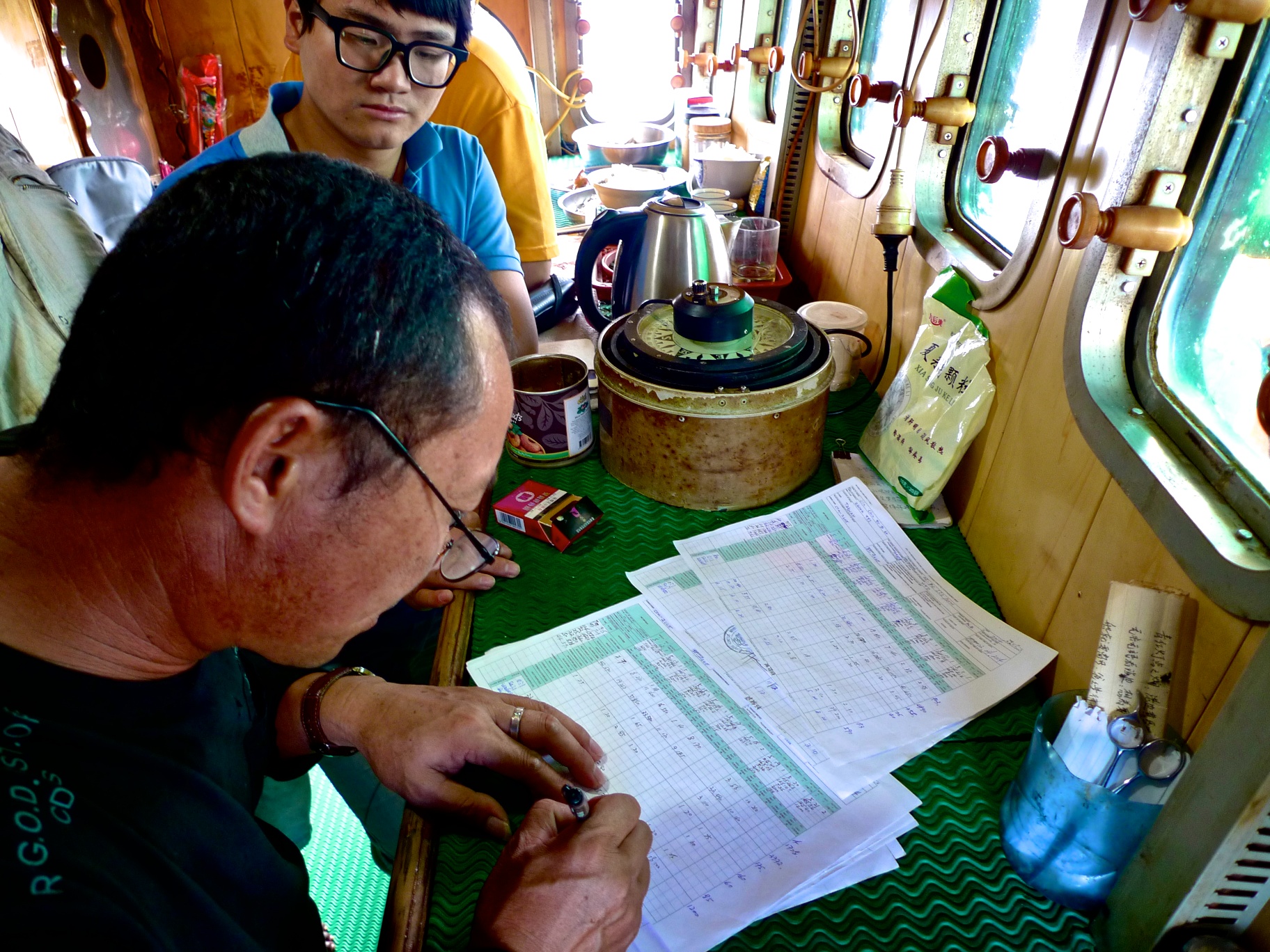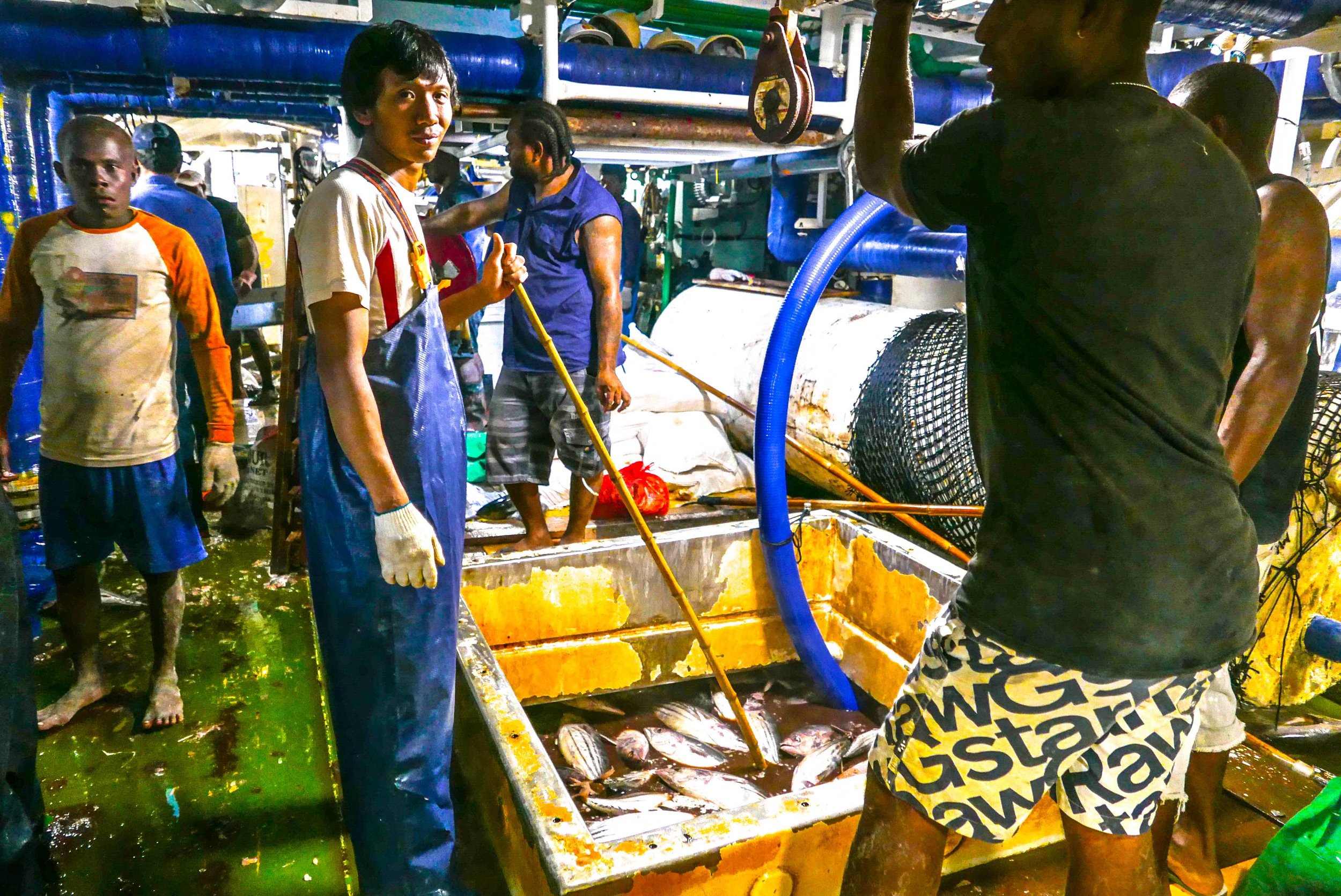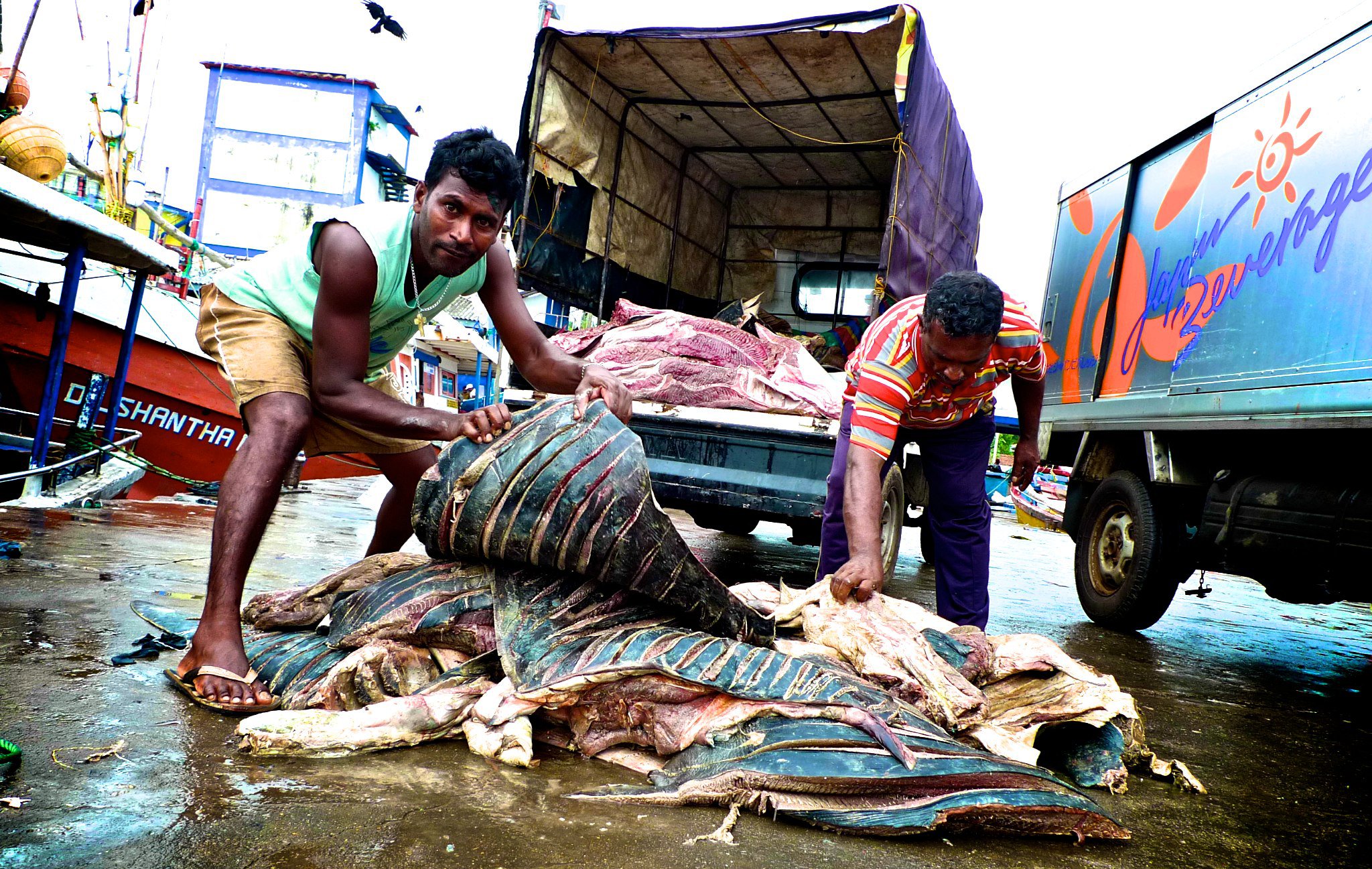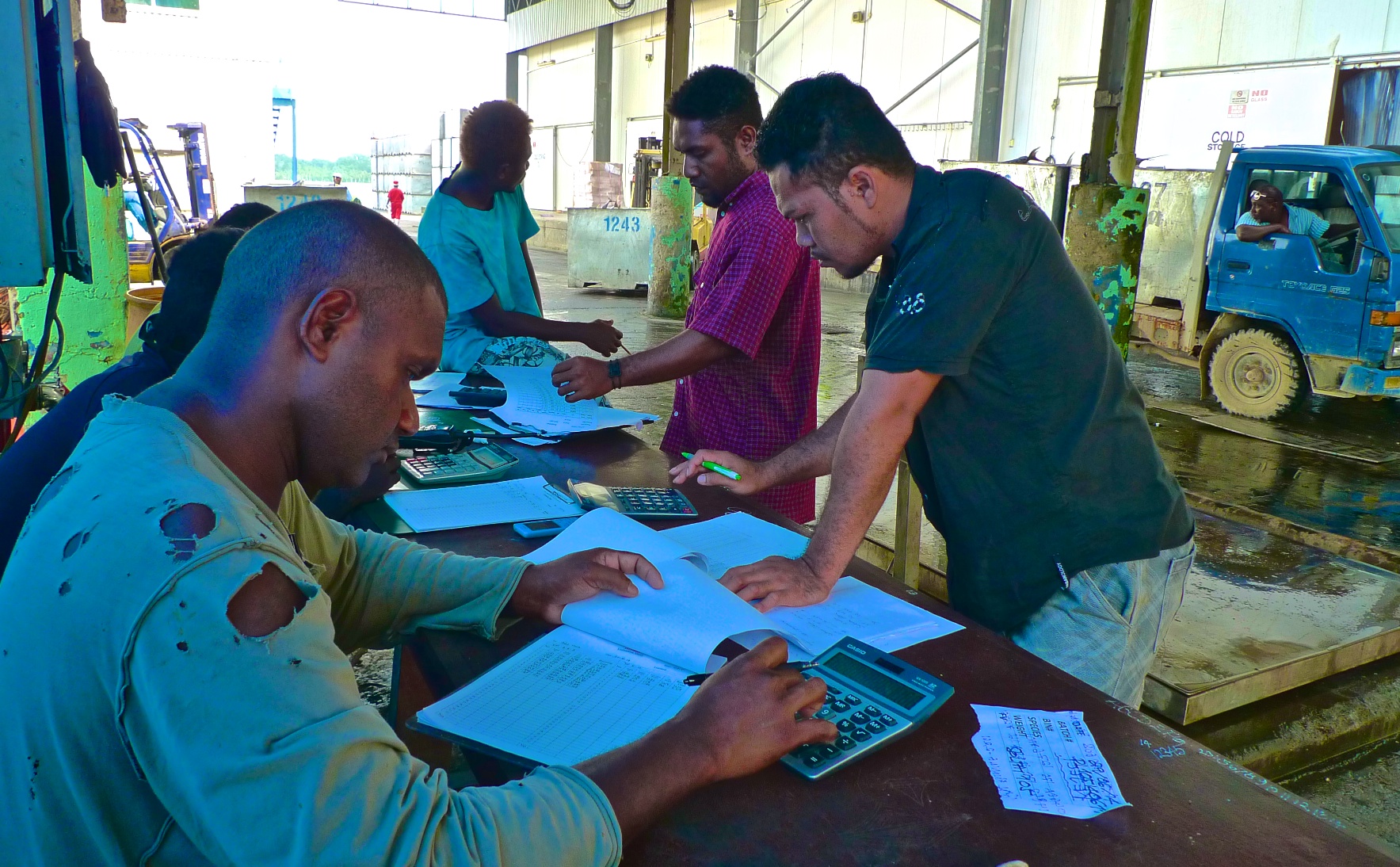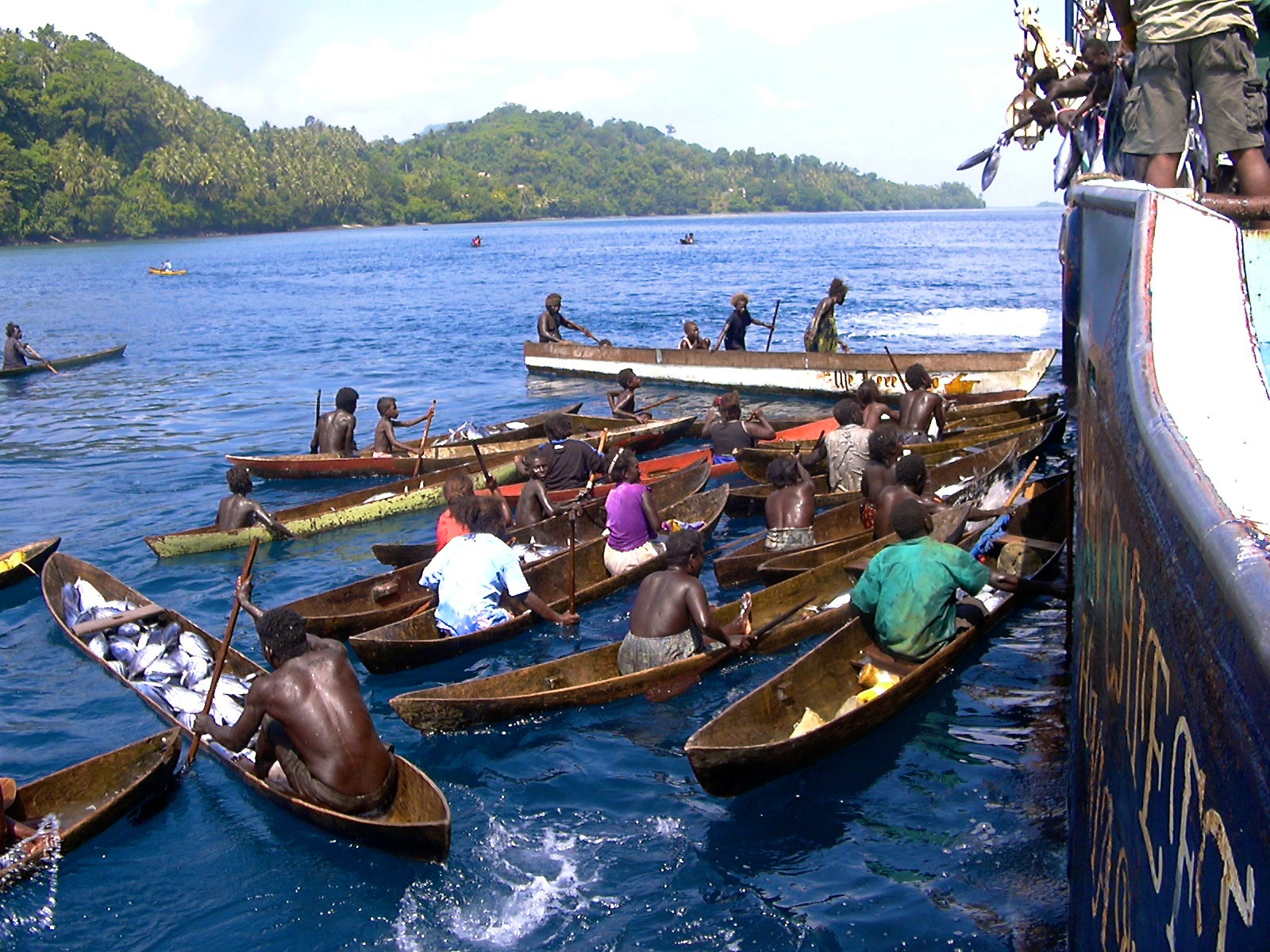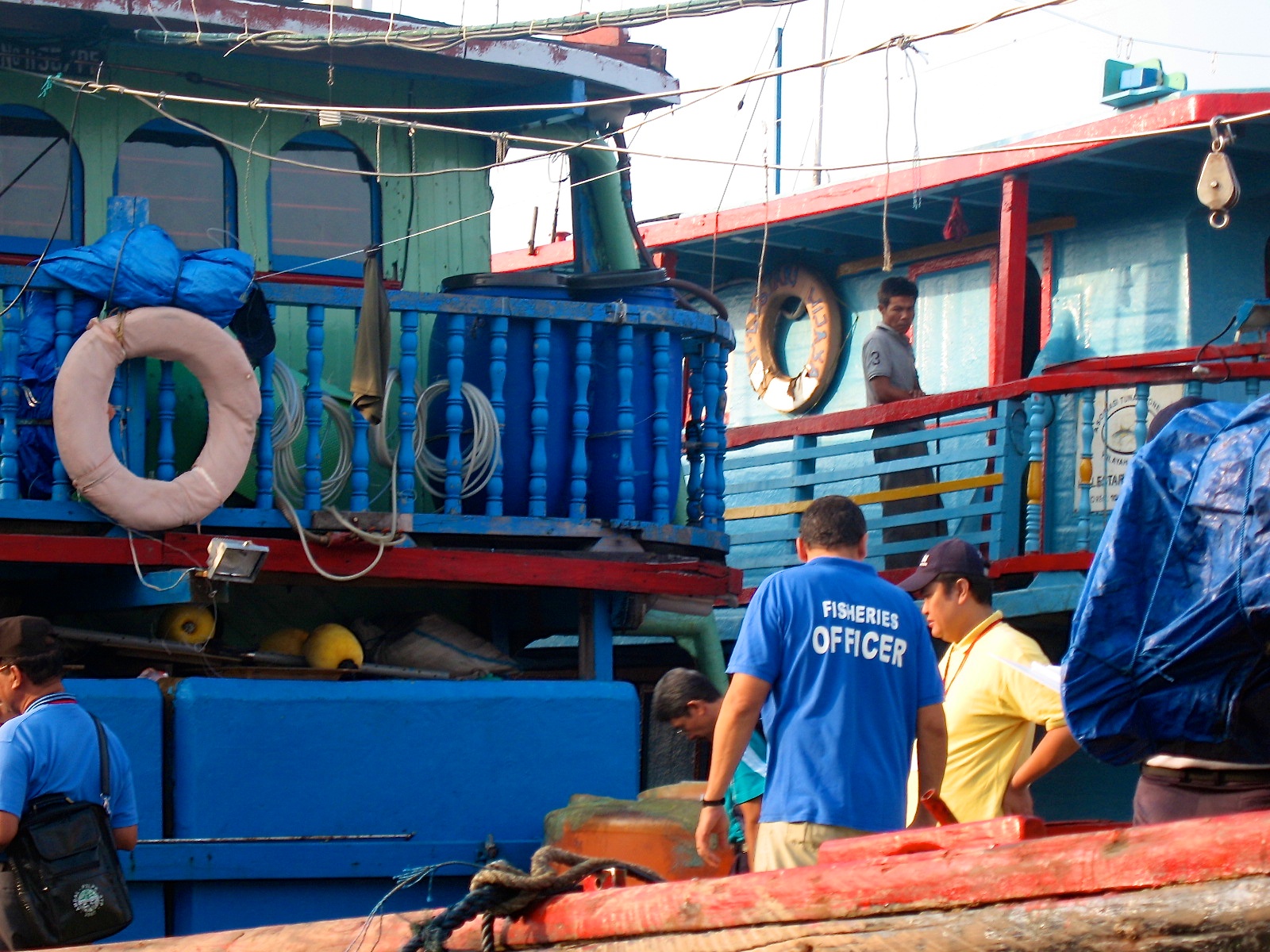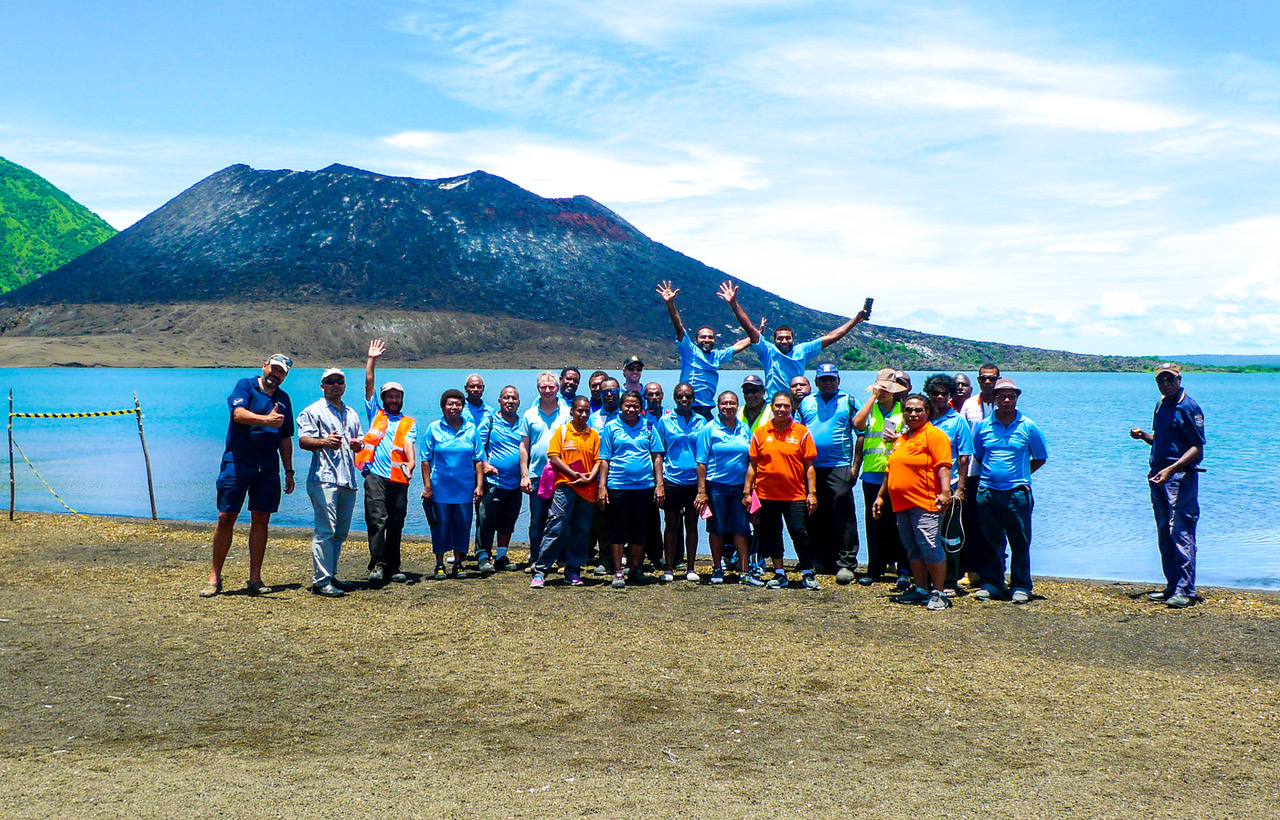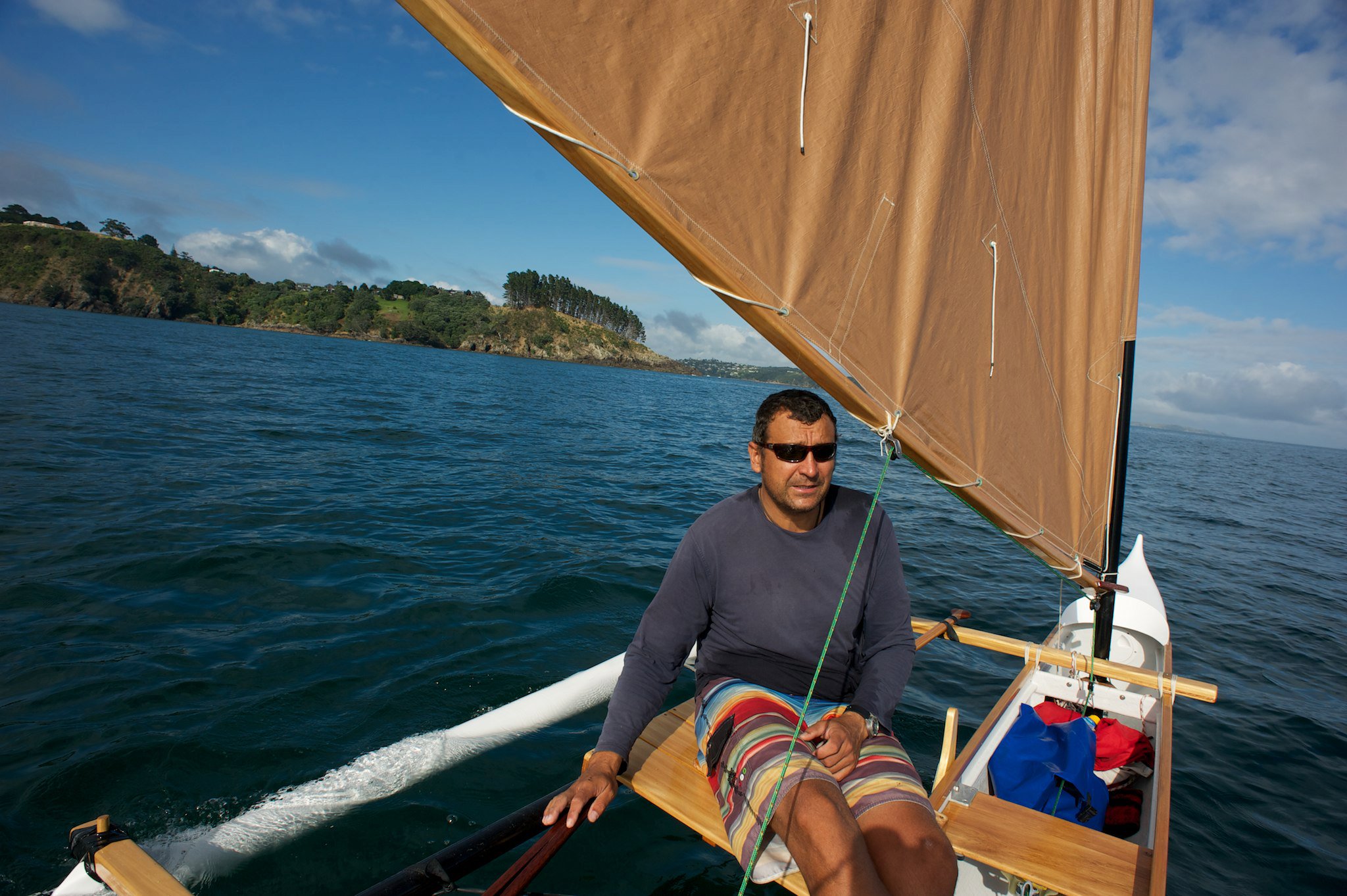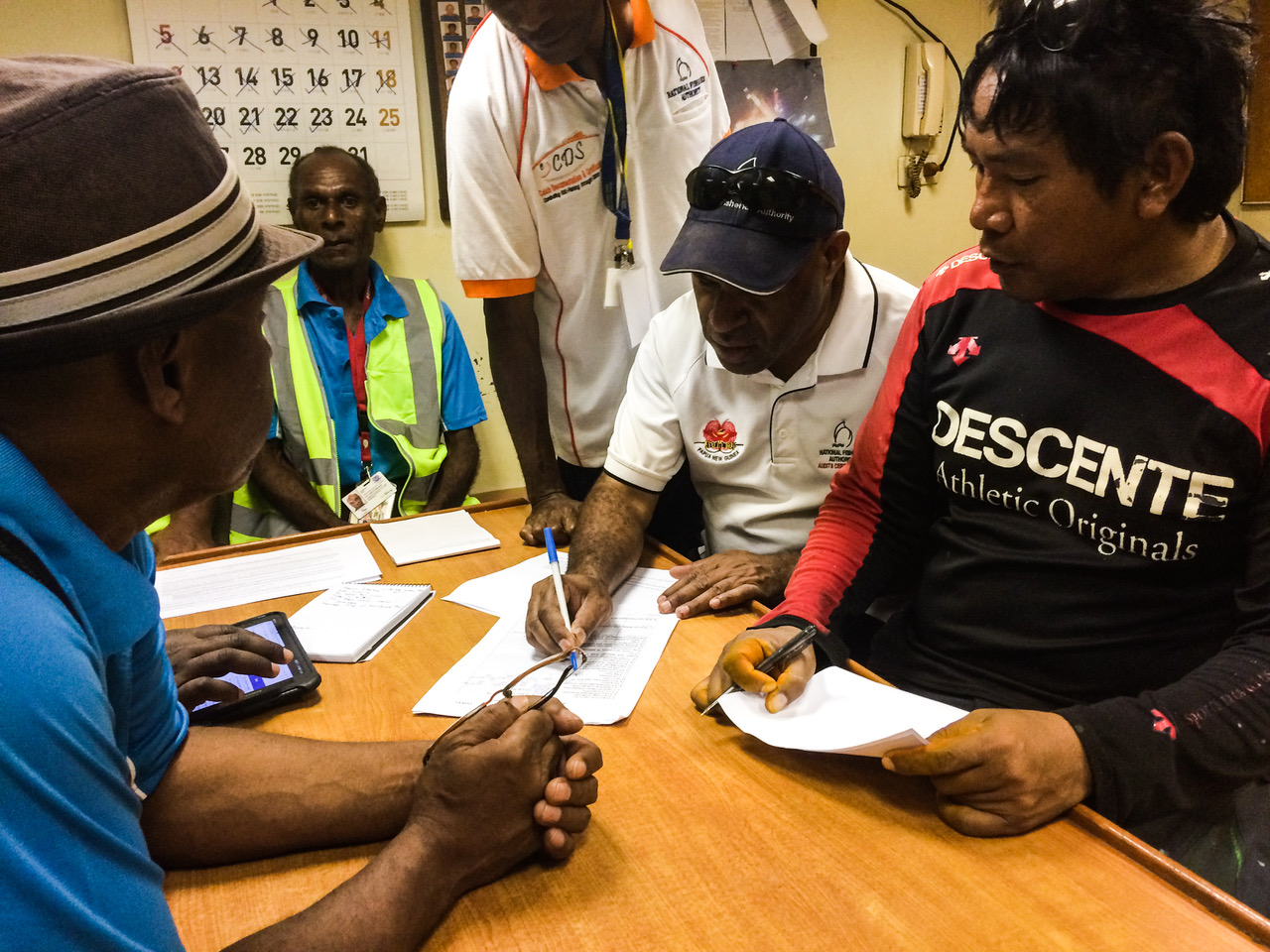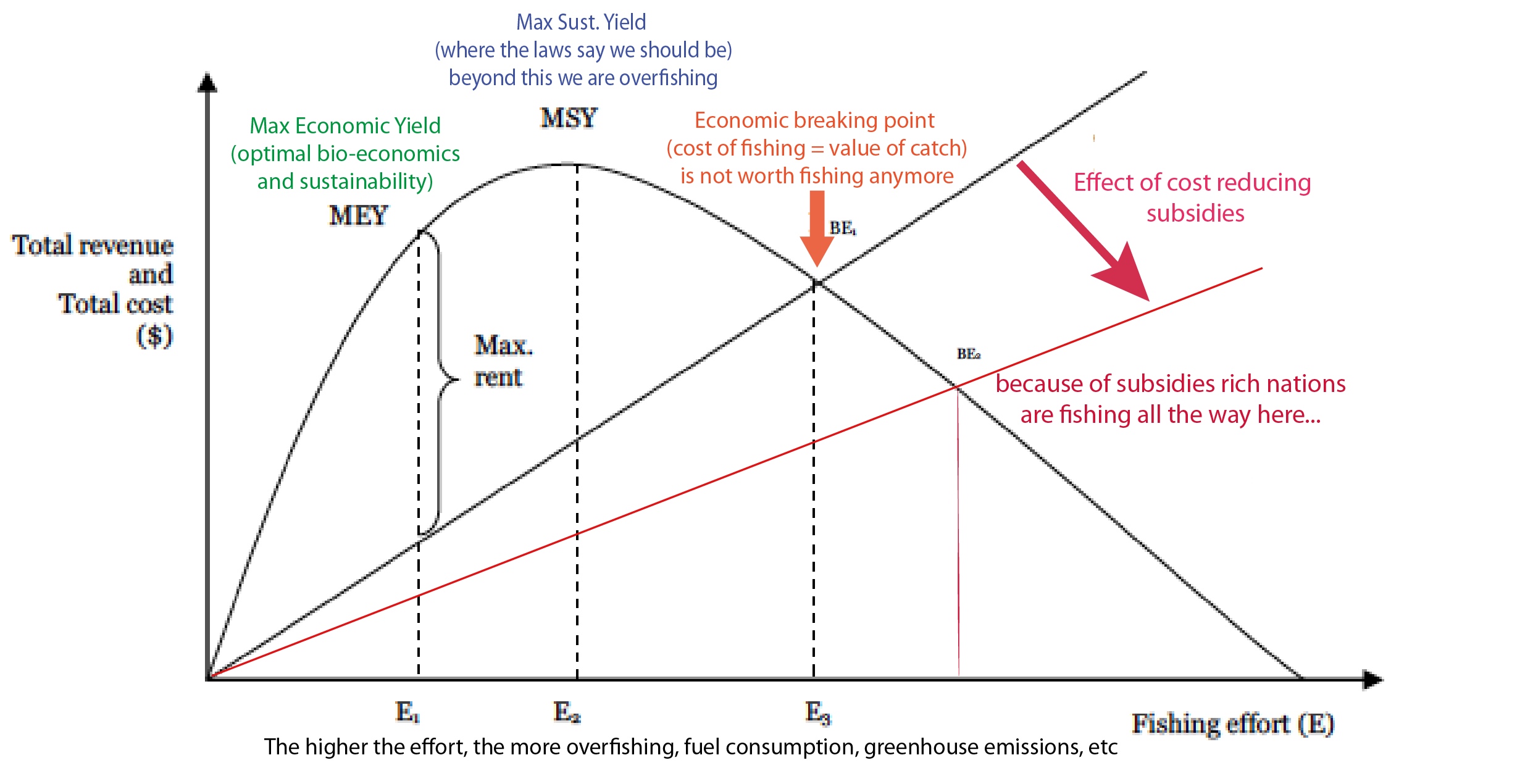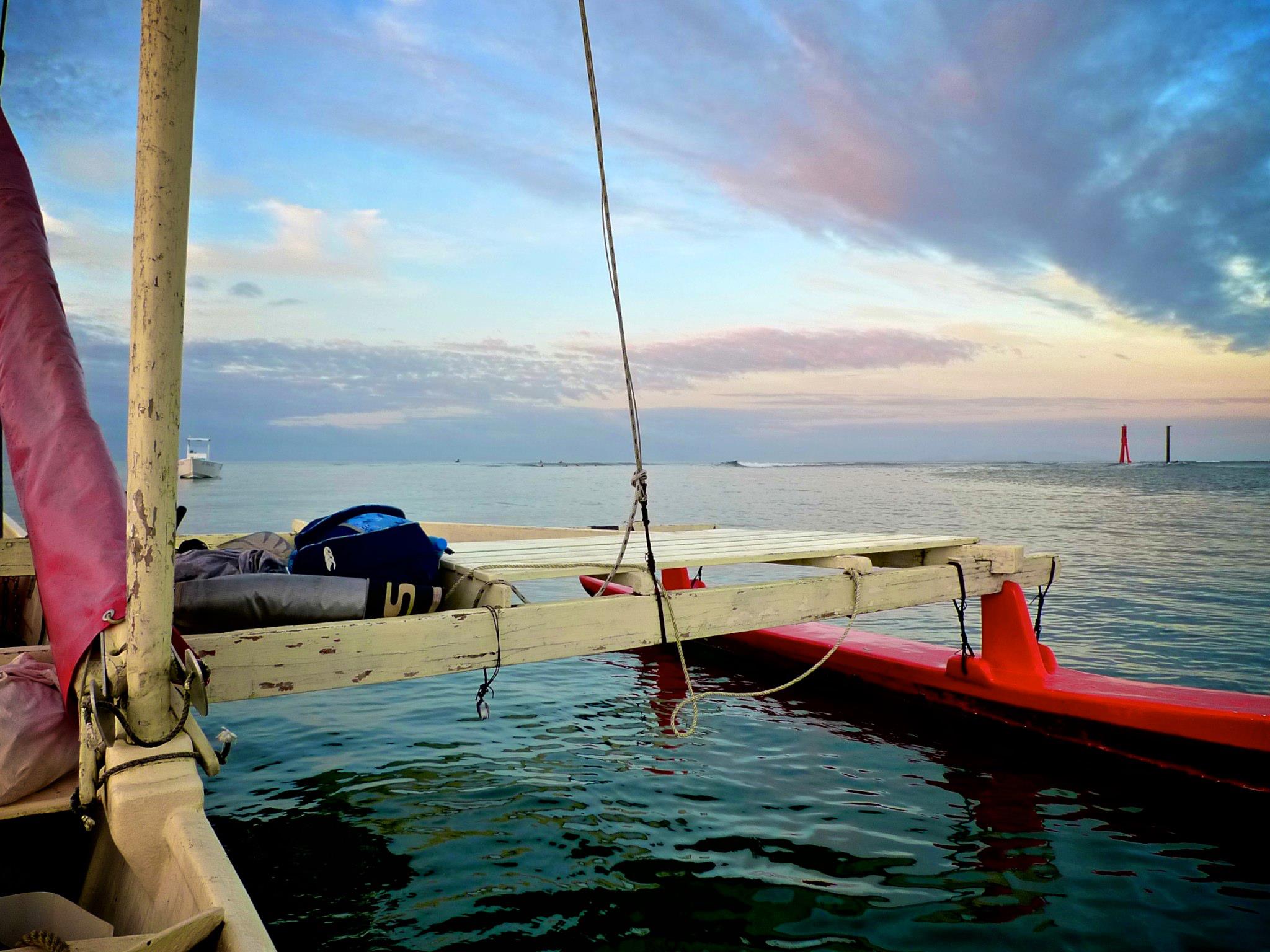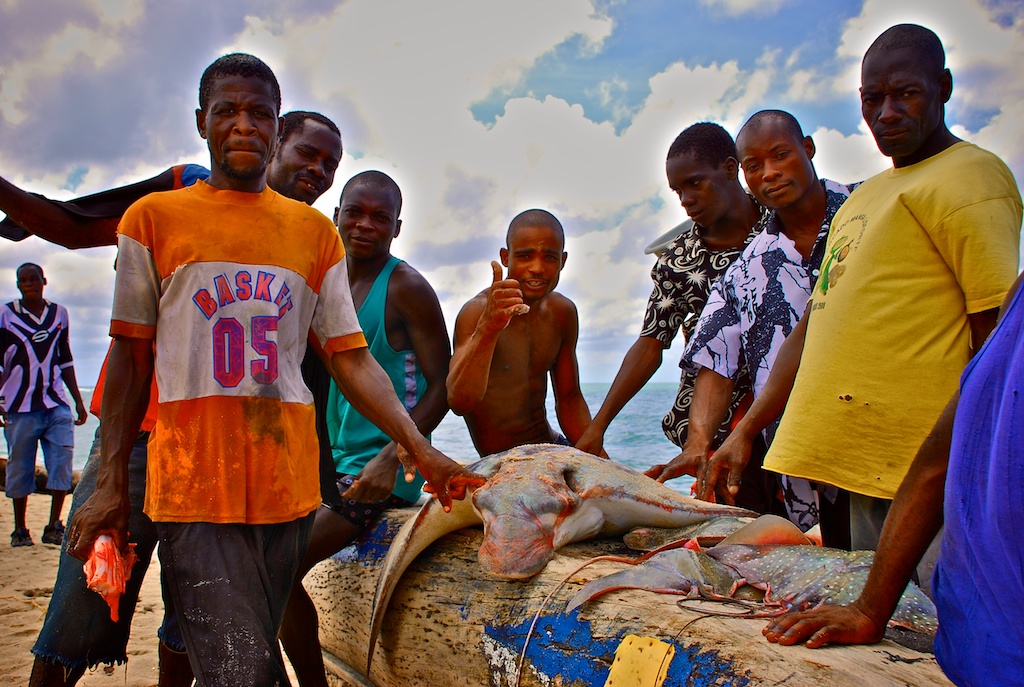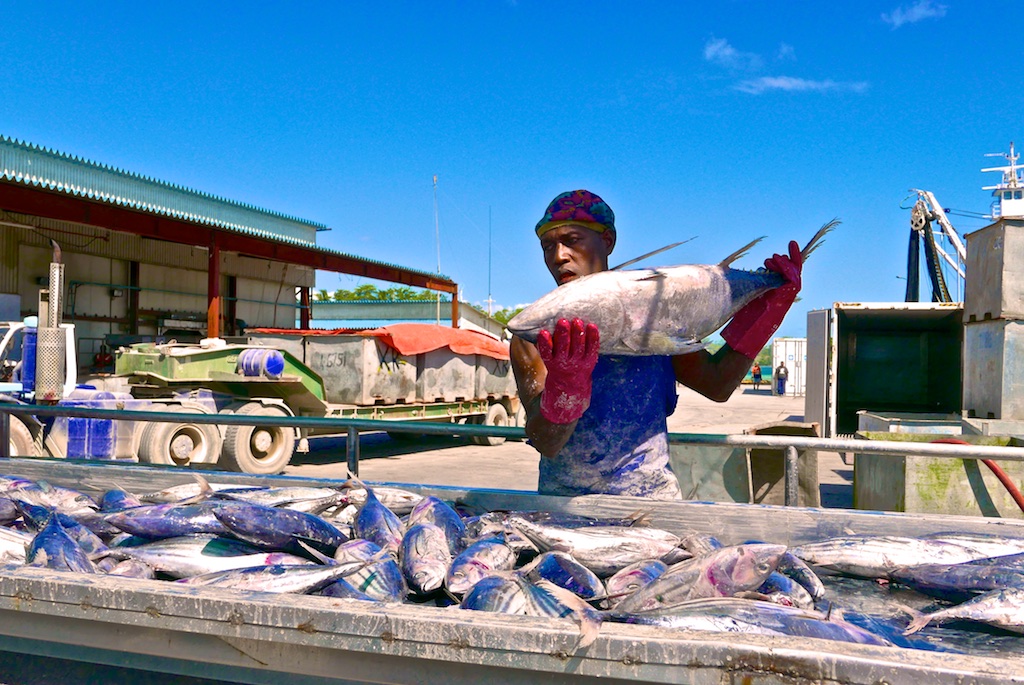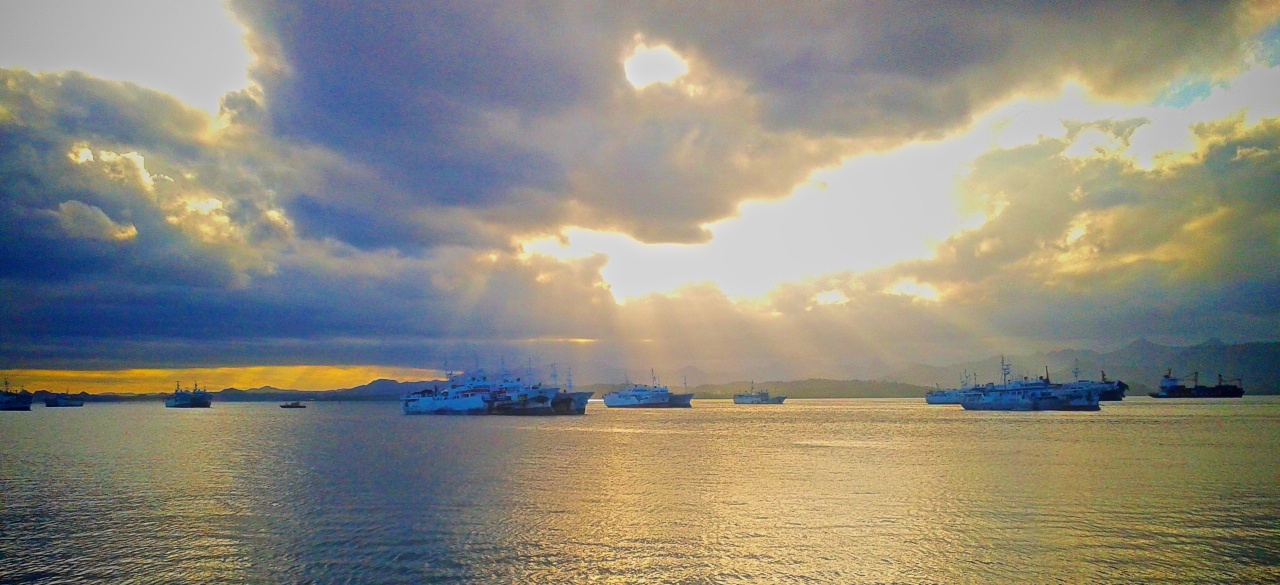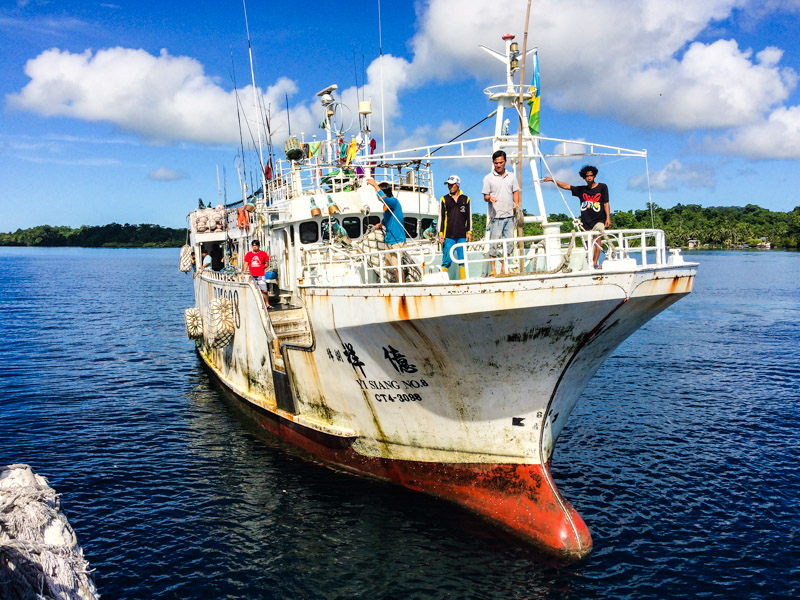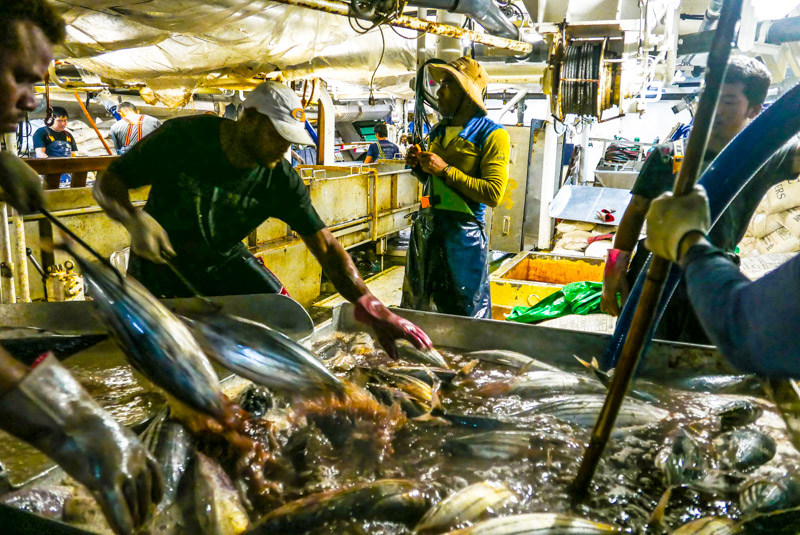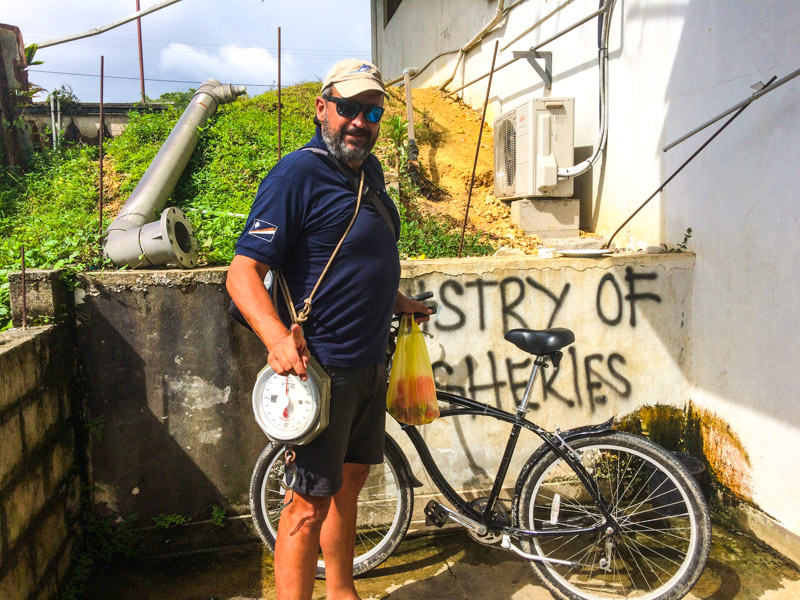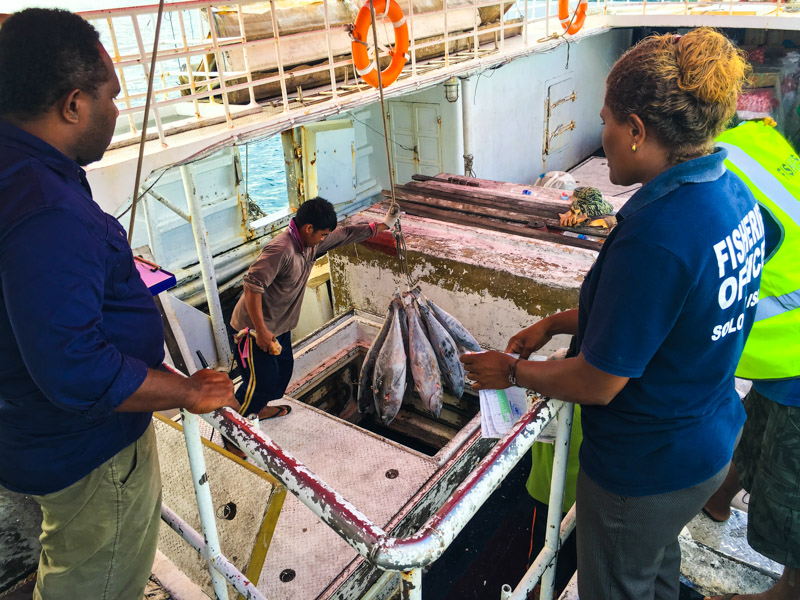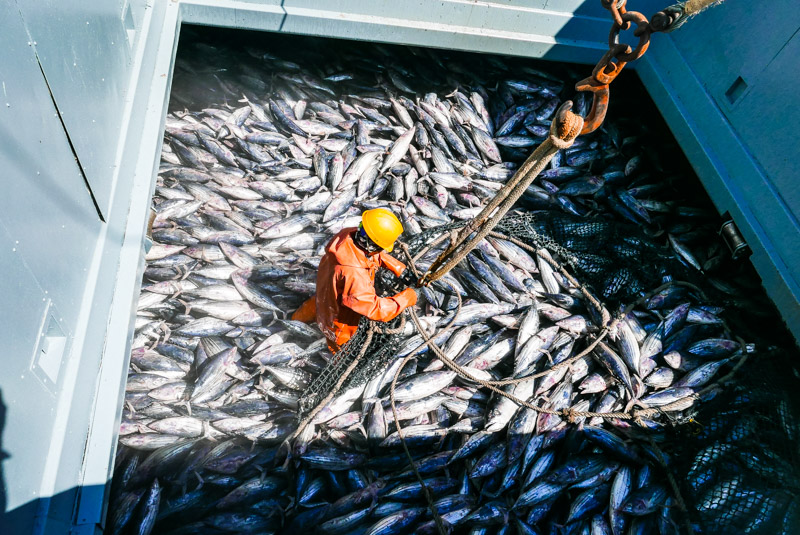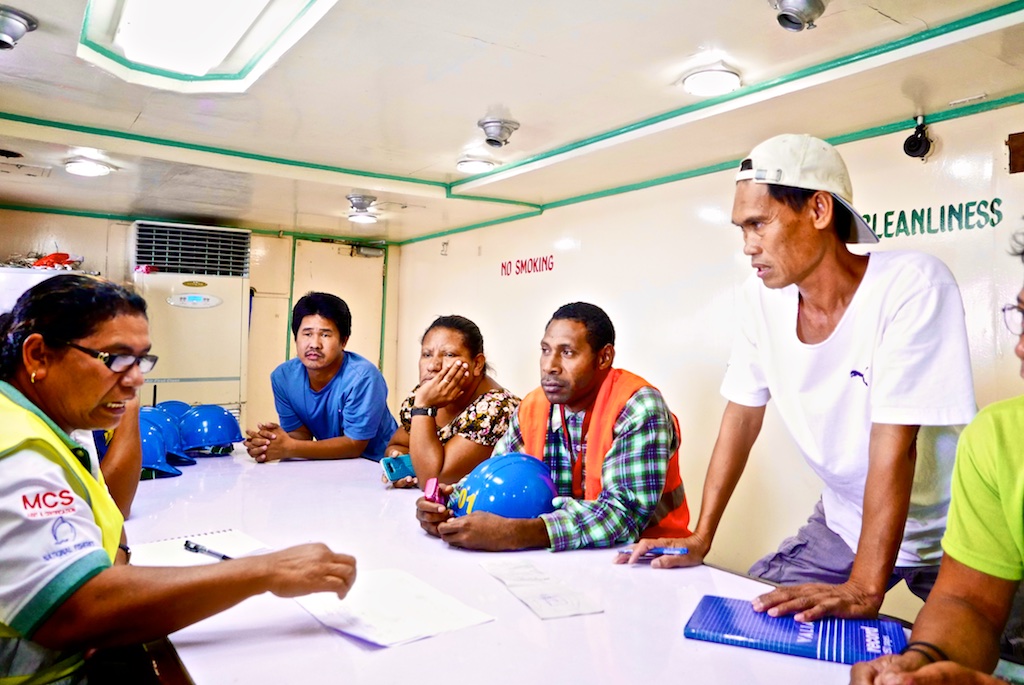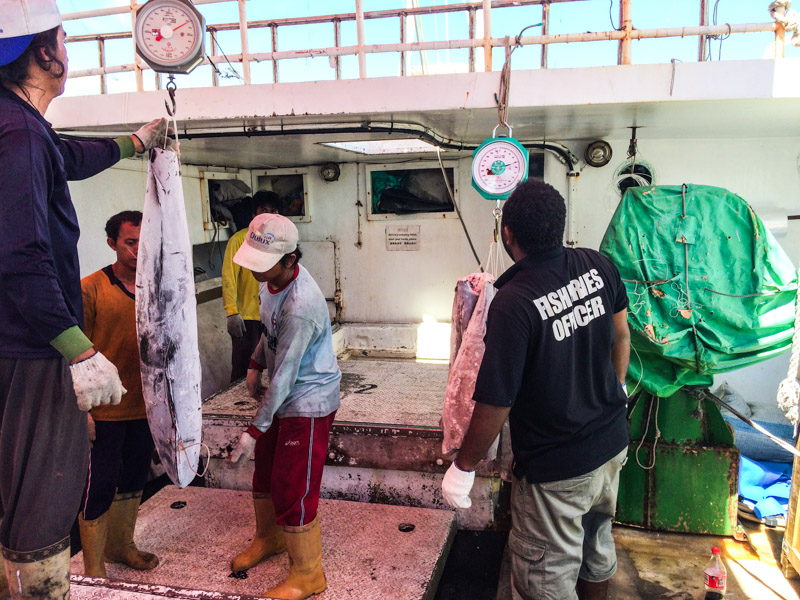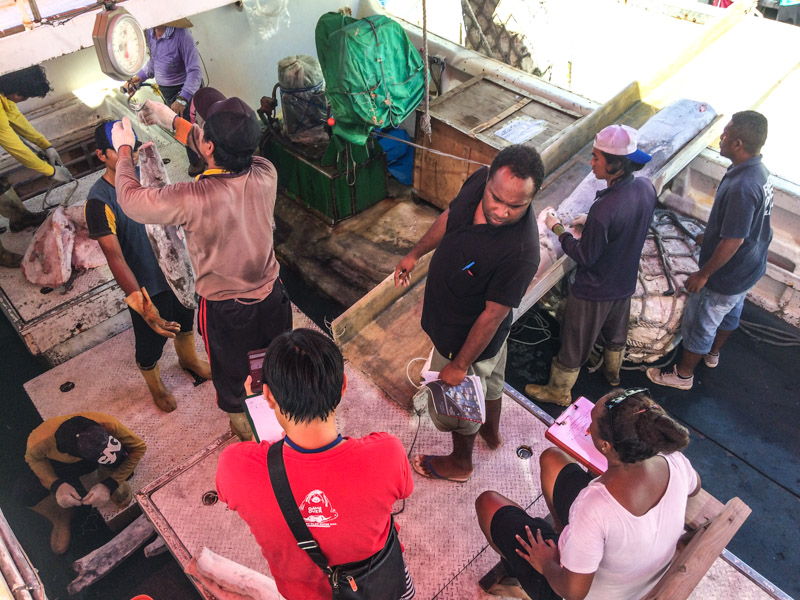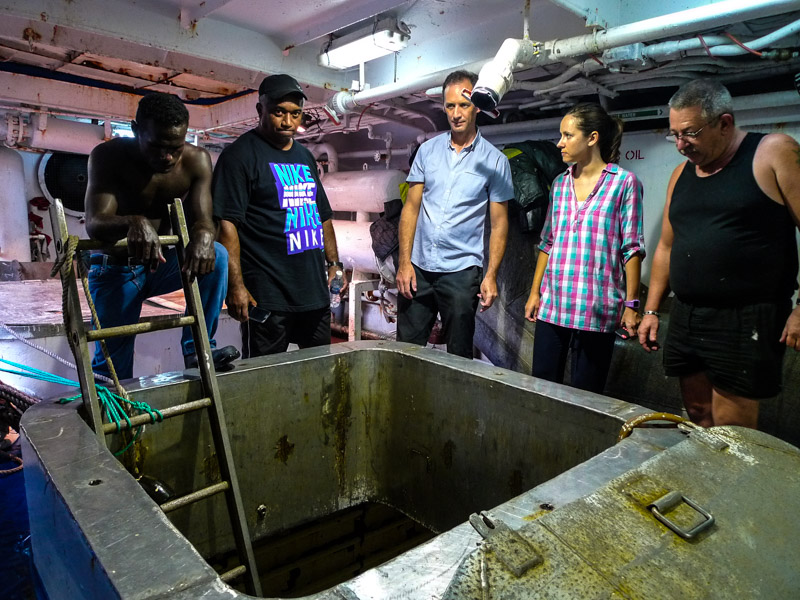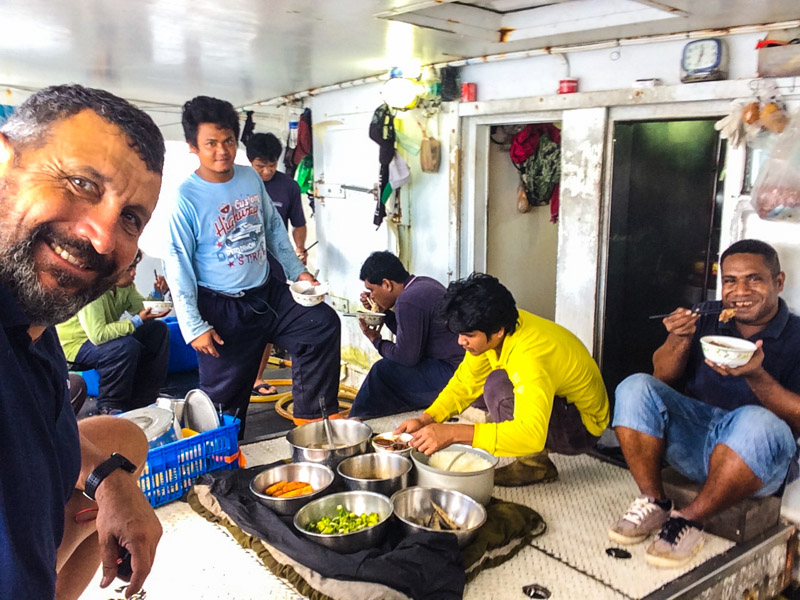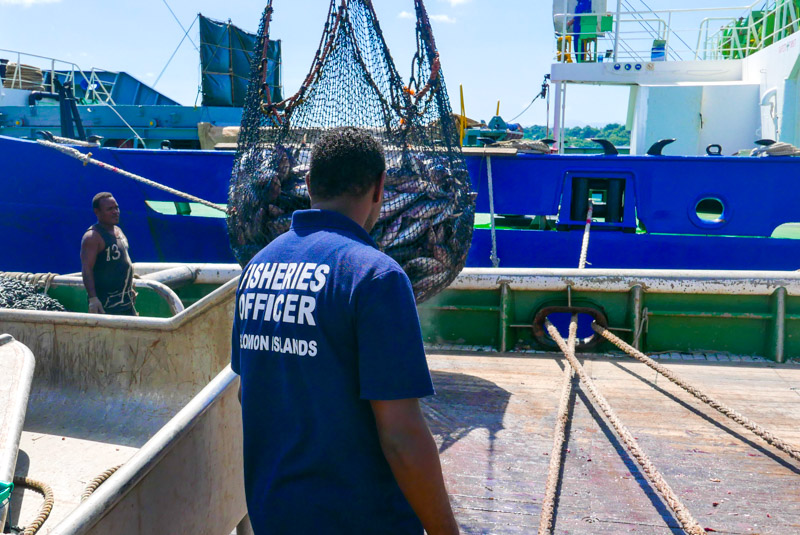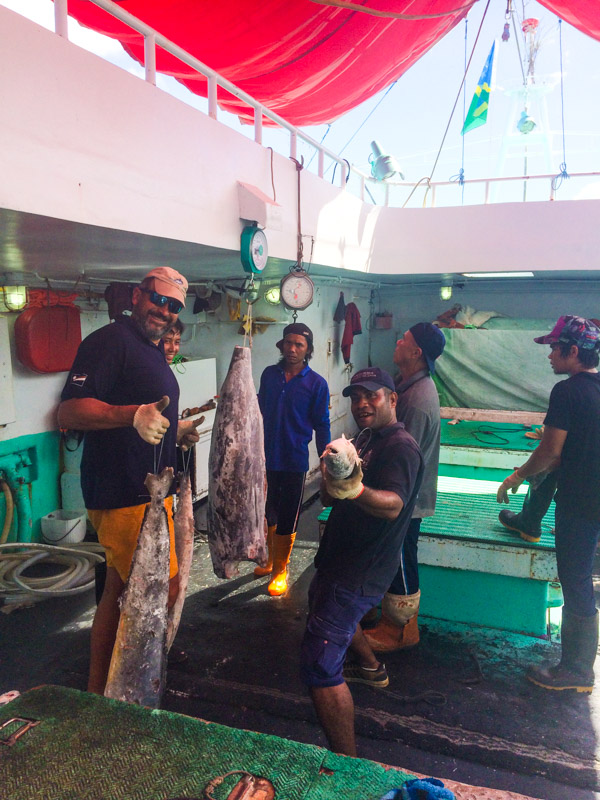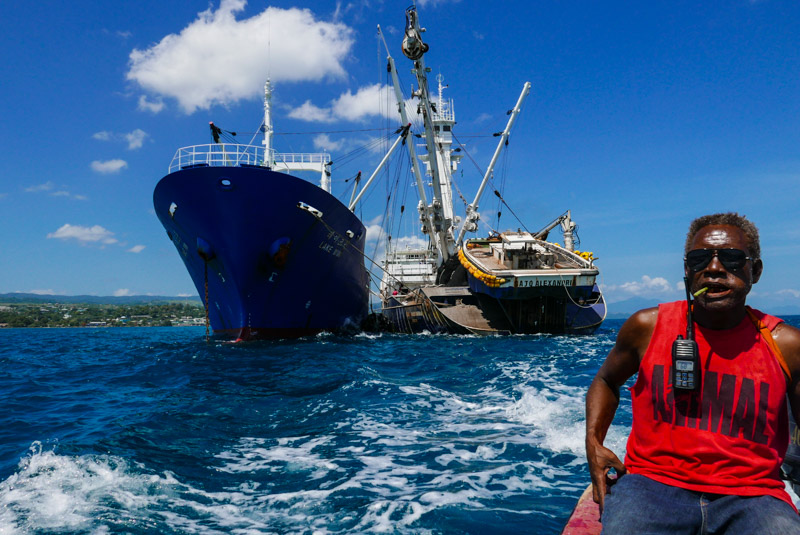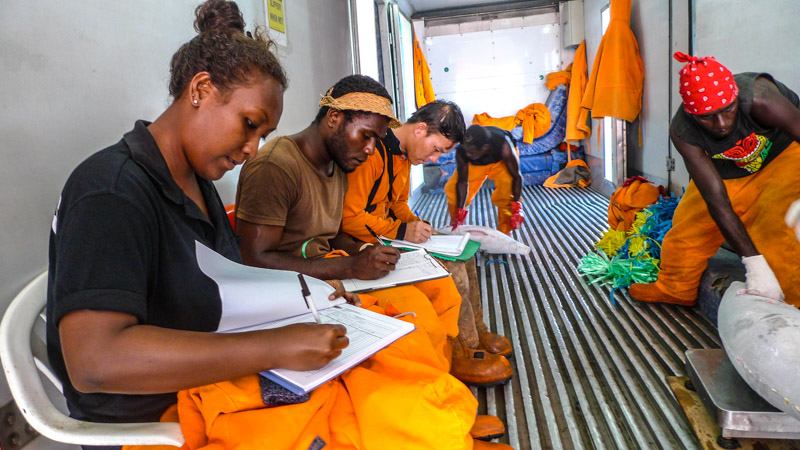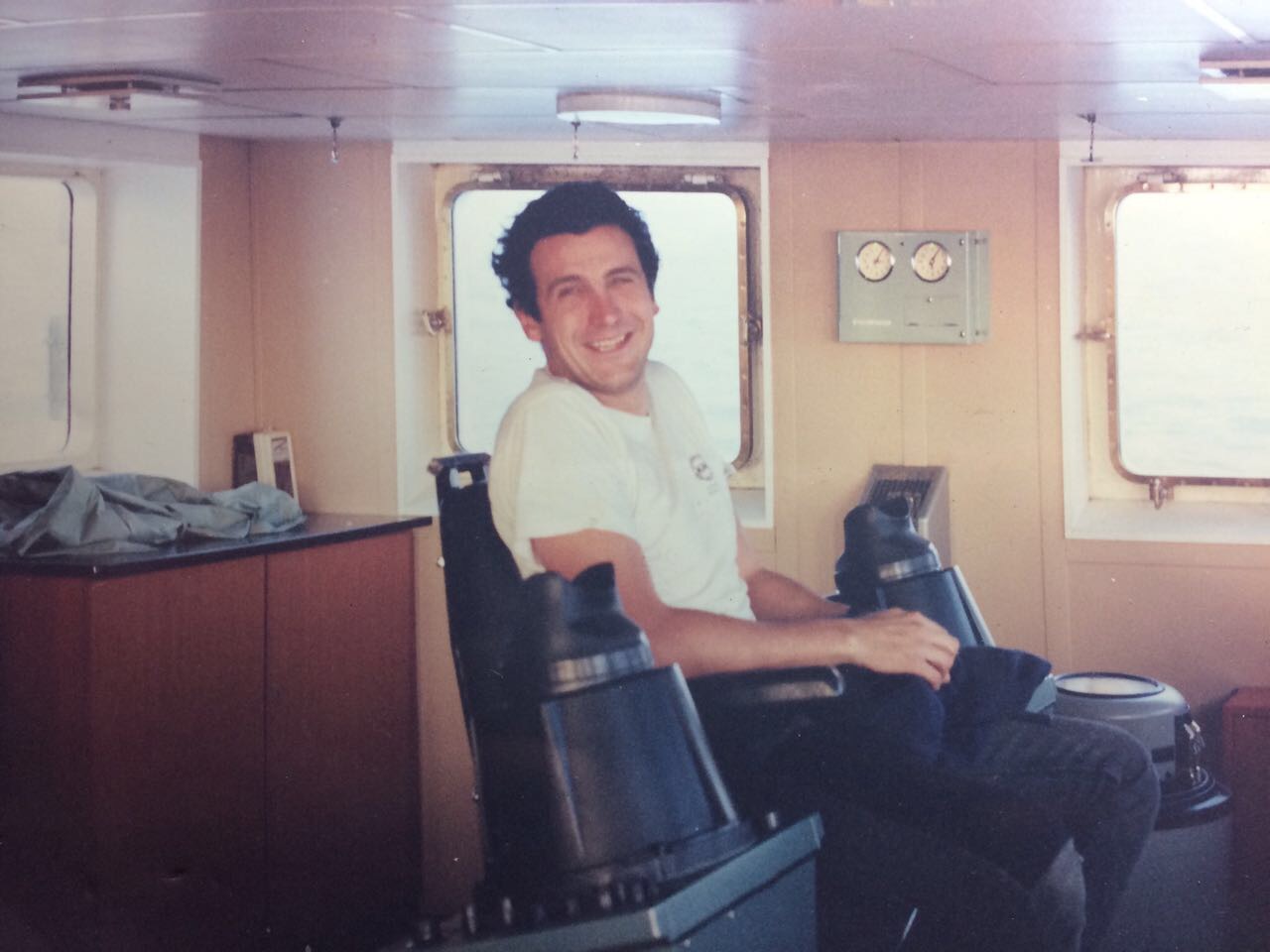Figure 4. True interoperability, where machine-to-machine communication can happen without the need of a translator service or any one service provider, allowing cross-supply chain and industry data sharing and communication.
Objectives
The objectives of this research were to use qualitative methods to:
- Identify where interoperability exists within the seafood industry and where there are gaps;
- Identify the challenges impeding interoperability, including nontechnical ones, at both the seafood company and technology vendor levels; and,
- Highlight existing initiatives working to overcome these challenges.
Discussion
Our discussion focuses on the barriers to interoperability from the perspectives of seafood companies, technology vendors, and supply chains as a whole. Additional factors, such as value chain type, have also been shown to influence the kinds of barriers preventing interoperability (Bhatt and others 2016). These factors will be important to consider in terms of how seafood companies and technology vendors may need to prioritize strategies for addressing the challenges noted here. To assist with this, we also describe several underlying tensions or counteracting forces that often create inertia or perpetuate the status quo (that is, no interoperability). And, we offer lessons from recent research and field work focused on implementing traceability across full supply chains, and make some recommendations for next steps in terms of overcoming barriers and scaling current efforts.
Barriers to seafood companies pursuing interoperability
Before interoperability can be implemented, it must be recognized. The barriers described below reflect factors that seem to be preventing companies from becoming aware of interoperability and recognizing its value. These barriers emerged as themes based on a process of pattern-finding to analyze the qualitative data from the online questionnaires.
An industry culture of competition, not collaboration
Interoperability requires a level of inter-business collaboration that is unprecedented in the seafood industry. Seafood businesses work on small margins and with a self-protective skepticism around the trustworthiness of competitors and trading partners. They guard their supply chains and sourcing practices closely, fearing that leaked information could damage business and reduce profits. The idea of interoperability—where specific product-level data are shared machine-to-machine all along the supply chain—is not only perceived as too risky, but is also antithetical to current industry culture.
Discounted value of interoperability
Traceability itself is relatively new to the industry, and the concept of interoperability is not even on the radar for many seafood companies. Thus, while the value of interoperability may be clear to those who understand its potential, most seafood executives are either unaware, or downplay the benefits because they are too hypothetical, long-term, or uncertain. The gains companies tend to realize through their traceability systems have to do with internal efficiencies, maintaining contracts with high-value customers, or marketing. Some find it difficult to imagine the complete benefits, especially supply-chain level benefits that interoperability makes possible through robust, end-to-end traceability. Others see the benefits as purely social (such as improvements in human rights across the industry as a whole) and, thus, not within their individual business interests. Making data capture and sustainability information relevant to seafood companies is a challenge, especially when consumer demand for detailed data is perceived as relatively low.
Barriers to seafood companies implementing interoperability
Once seafood companies are aware of the value of interoperability, they face new challenges related to implementation. The barriers described below emerged as themes based on a process of pattern finding to analyze the qualitative data from the online questionnaires.
Scarce resources are already fully tapped
Interoperability requires both capital and human resources. Even when a seafood company's leadership sees the potential value of integrating with other systems, the cost of implementation can be prohibitively high. This is especially true for custom ERP systems and legacy systems. Interoperability implementation can require significant attention from IT staff (where such staff exist), many of whom already have more work than they can handle. Seafood companies without IT staff have no choice but to hire an IT consultant to do the work, or to pay the premium that most ERP systems charge for custom integrations. Adding to the financial burden, interoperability implementation and the related back-end code updates can take the entire system offline for weeks. Most companies cannot afford that level of disruption to their operations.
Barriers to technology vendors pursuing interoperability
In addition to the factors impeding adoption of interoperability among seafood companies, technology vendors face their own barriers when it comes to integrating with other platforms. The following barriers emerged as themes based on a process of pattern finding to analyze the qualitative data from the interviews with technology vendors.
Perceived risks outweigh uncertain benefits
While the risks of interoperability perceived by seafood companies concern privacy and security, traceability technology vendors see interoperability as potentially jeopardizing their business futures. They cannot afford the costs to both their bottom lines and their reputations of attempting to interoperate with another vendor—especially a young, unproven start-up, as many traceability vendors still are—without guarantee of success. Some traceability companies have made false claims about the services that they provide and, thus, vendors interested in integrating with other vendors have to do their own vetting process before moving forward with partnerships. Interoperability among vendors occurs most often when integration is requested from their clients (that is, seafood companies), which is relatively rare for the reasons described earlier.
Barriers to technology vendors interoperating
System incompatibility
The manifold electronic data systems used in the seafood industry presents a significant challenge to interoperability. In general, integrating with an ERP system is more straightforward than integrating with a cloud-based traceability system. However, older systems, custom-built systems, and platforms built on obsolete operating systems (Windows 95, for example) can pose incompatibilities that are not rectifiable and, as a result, interoperability partnerships are abandoned. In many cases, interoperability requires system-to-system customization, which when trying to link an entire supply chain may mean designing custom integrations with several very different systems, each built on their own platforms.
Barriers to seafood supply chains interoperating
In the case of both seafood companies and technology vendors, interoperability will only succeed to the extent that all players in the supply chain are willing and active participants. The barriers described below reflect factors that impede entire supply chains from interoperating. These barriers emerged as themes based on a process of pattern-finding to analyze the qualitative data from both the online questionnaires and the interviews with traceability vendors.
A chain is only as strong as its weakest link
Interoperability is not simply a decision made between 2 trading partners; all supply chain actors must comply and demonstrate at least a minimum level of commitment. Thus, supply chains that include businesses that lack traceability cannot interoperate; supply chains that include businesses that cannot (for cost or technical reasons) or refuse to integrate their systems even though all other trading partners are on board cannot interoperate. Meanwhile, supply chains that include businesses using traceability technologies that are inferior with respect to data handling or data security, may not realize the full benefits of interoperability, or may decide that interoperating is too risky.
Lack of consistent data standards
Interoperability requires sets of standardized data formats and data fields that all systems can follow. Although certain standards (for example, GS1 and EDI) exist, most seafood companies are not members of such schemes, namely due to cost and lack of demand from their customers for such standards. Given that most companies have their own internal product SKUs, even if systems are made to speak the same language (syntactic interoperability), they must also be able to exchange data in a meaningful way (semantic interoperability). Thus, if a seafood company or technology system is GS1 compliant, for example, but the data received from the supplier are not formatted correctly, the information cannot be passed along. The absence of universal product codes for the hundreds of thousands of different combinations of species, product types, product forms, product weights, and so forth passing through seafood company databases may be one of the most formidable barriers to interoperability. Further complicating the situation, some major buyers have their own “flavors” of EDI, forcing customization even within a “standard.”
Opportunities for moving forward
This research highlights the range of technological, financial, logistical, and cultural barriers to interoperability currently facing companies and technology vendors working within the seafood supply chain. As with any system-level problem, tackling these barriers in order to scale interoperability requires a comprehensive strategy—one that is beyond the capacity of any single company, government, or organization to achieve. However, individual efforts working in concert can provide the multi-pronged approach necessary to initiate forward progress.
The following initiatives are examples of ongoing work to address particular barriers to interoperability in the seafood supply chain. Some of these efforts are more closely coordinated than others. Based on our findings, continued dialogue and knowledge sharing may be fruitful as these projects progress in order to accelerate interoperability and ultimately, adoption of digital traceability systems across seafood supply chains.
The seafood traceability technology architecture and rollout strategy
This project, led by the Institute of Food Technologists’ Global Food Traceability Center (GFTC) is intended to address the growing need for a global, secure, interoperable seafood traceability system by designing a common technology architecture. Details of this work are presented in articles by Bhatt and Gooch (2017), Bhatt and others (2017), and Gooch and others (2017) on pages 22 and 45 of this supplement.
Barrier addressed: lack of consistent data standards
Financing full-chain traceability
FoF is leading efforts to develop novel ways of financing the implementation and long-term maintenance of full-chain traceability. Through this effort we hope to help alleviate some of the burden that interoperability brings, especially to seafood producers and processors. By reinventing the traditional transaction model, this initiative seeks to unlock the full value that accurate, shared data provides to seafood companies, governments, and NGOs and move digital traceability from something currently funded by foundations to an investment made by industry.
Barriers addressed: an industry culture of competition, not collaboration; scarce resources are already fully tapped
Catch documentation and traceability architecture
With the GFTC, FoF is currently under contract with the U.S. Agency for International Development's (USAID) Ocean's and Fisheries Partnership Program to design a technology architecture for interoperable communications between traceability vendors, supply chain members, governments, and others to effectively communicate information that meets the KDE and privacy needs of fishery stakeholders (USAID 2017). The result of this work will be a published and vetted architecture that allows interoperable web services to effectively and efficiently communicate among data technologies.
Barrier addressed: lack of consistent data standards, system incompatibility
Conclusions
If you build it, they may come; but then again, they might not.
When asked, the majority of those involved in the seafood industry—from seafood companies to NGOs to government officials—tend to assume that the biggest hurdle to interoperability is technical in nature. That is, technology vendors still have not done the work to make their systems compatible. Yet, research shows that this is not the case. The technical ability to join 2 data systems has long been available. It is the scaling of that process that remains stalled.
Generally speaking, traceability technology providers see value in interoperating, both in terms of services to their clients, for growing their customer bases, and for competitive advantage. Yet, demand for interoperability is currently lagging.
Today, technology companies have 2 choices: either pursue interoperability despite lack of customer demand in hopes that existing and future customers will realize the benefits and eventually come on board; or wait for demand to hit critical mass and then spring to action. Either decision requires a leap of faith: the former involves significant upfront investment with no guarantee of returns while the latter risks missing out on the potential advantage of being among the interoperability pioneers. Accelerating buy-in to the value of interoperability (and traceability) requires efforts to align supply chains and effectively strategize solutions to the cultural elements and relationship dynamics in the system. The good news is that these efforts have already begun.
Mitigating risk, embracing opportunity
A primary goal of the current interoperability initiatives outlined here, and highlighted in this supplement, is to help mitigate risk for technology companies, and to support the seafood industry as it transitions to digital traceability solutions.
Current efforts to interoperate are stuck at the small scale. But the barriers impeding progress can be moved—especially now that they have been identified in a more holistic fashion. The subsequent articles in this Supplement provide further insight and opportunities for how we can leverage these insights for continued progress.

